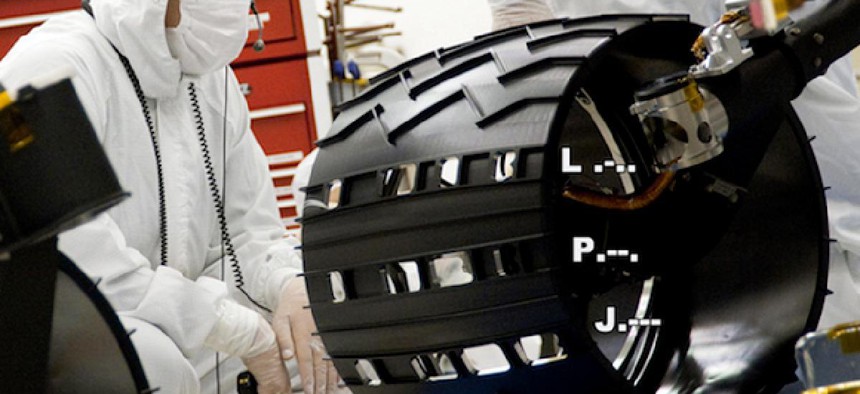Curiosity takes its first drive, leaving Morse code on Mars

NASA/JPL
Humans, via their robotic rover, are now leaving their mark on the Red Planet.
When the creators of Curiosity built the rover that would explore Mars, they gave its wheels special treads. The marks left by Curiosity's tires as they tool through the dust of the Martian soil won't just serve as visual odometry markers, allowing Curiosity's engineers to determine the rover's orientation and distance traveled; they'll also send a message. Specifically, this message:
short long long long
short long long short
short long short short
Which is also to say, in Morse code:
. - - -
. - - .
. - . .
Which is also to say, translating that code: J-P-L, the acronym for NASA's Jet Propulsion Laboratory -- Curiosity's creator.
Yes. A calling card, coded into Curiosity's every move. Which was feasible for JPL engineers this time around because of Curiosity's advanced design. The wheels of Opportunity, Curiosity's predecessor, had basic, square holes, which allowed the rover to be bolted to its lander during cruise and touchdown. Since Curiosity didn't have a lander, though -- the thing, famously, pretty much landed itself -- JPL engineers suddenly had the freedom to create cleats in Curiosity's wheels that were aesthetic rather than pragmatic in function. And the Morse-to-Mars tribute to their work is what they chose.
Read more at The Atlantic.


